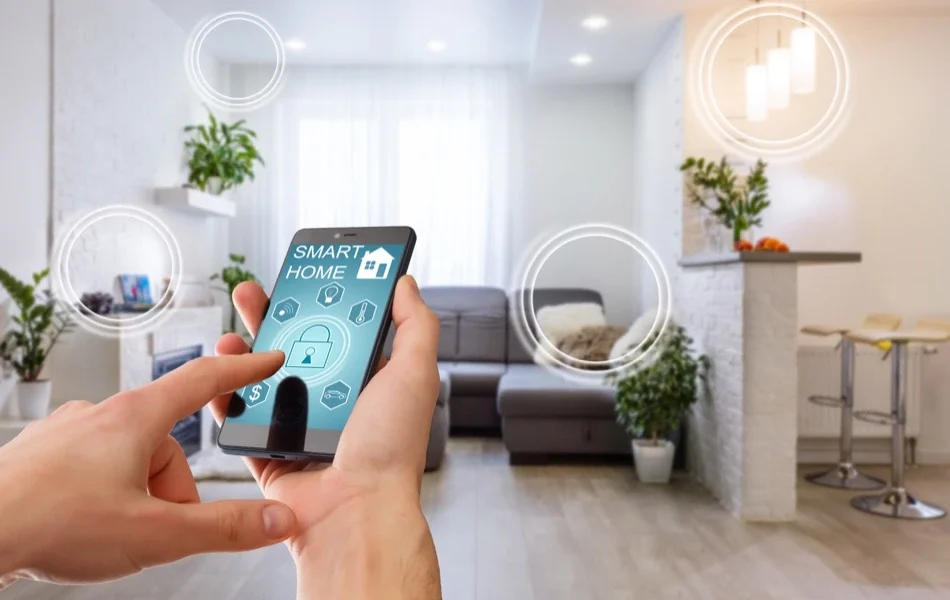Smart home solutions are becoming more popular as technology provides optimal solutions for homeowners. With eco-friendly options, they can also help save money on energy costs, automate climate control in your house, and simplify the management of your rental property. Incorporating these innovations into rental properties can improve the living experience, attract tech-savvy tenants, and increase property value.
While tenants are the real beneficiaries of the smart devices installed, that doesn’t mean landlords won’t benefit from it either. Renters look for smart home technology devices that strike the right balance between functionality and luxury without requiring expensive subscriptions, which can add to expenses every month. In light of this, read along as this post discusses the top five smart home technology features for rental homes. Let’s go.
Top 5 Smart Home Technology Features for Rental Homes
Smart Thermostat
Heating and cooling are two energy-inefficient processes and major contributors to rental property bills. Most heating and cooling systems have complicated controls and are expensive to operate and maintain. Usually, tenants set household temperatures too high in the summer and too low in the winter by tenants.
Tenants often maintain it that way even when they are not at home. This doesn’t benefit the environment, nor does it help their finances. Smart home appliances tend to attract modern tenants due to convenience. You can monitor and control the property’s temperature by installing smart home devices. Landlords could use an app to turn off the smart thermostat, for instance, if you discover that you left the heating on halfway through the day. This will help both landlords and tenants save money, stress, and time by doing this.
Smart Lighting
There are other eco-friendly and cost-effective options available than just smart thermostats. When it comes to lighting, there is a great deal of room for savings because people are quite bad at turning off the lights when they leave a room. According to the US Energy Information Administration (2018), lighting alone accounted for up to 17% of energy use. The price of bulbs is another reason to try and reduce that if that wasn’t enough of a reason already, not to mention the inconvenience of having a broken lightbulb right when you need it.
The good news is there are a few ways to improve the lighting situation in your rental home. You can reduce the amount of time you leave your lights on by controlling them with smart devices. Like smart thermostats, you can turn smart lighting on and off anywhere, giving the appearance that someone is home. When tenants are gone for a long period, this can help keep your property more secure.
Smart Security Unit
Compared to traditional home security systems, a smart security system offers additional tools to protect renters, their belongings, and the rental property. The market for smartphones designed to control smart home security apps is projected to grow at a compound annual growth rate (CAGR) of 13.81%, reaching $61.97 billion by 2029.
Wireless cameras, alarms, smart locks, motion detectors, and more may be a part of it. Besides being able to arm and disarm the system no matter where you are, tenants can use an app to monitor their children or pets while they are gone. Smart home security systems are a desirable feature for renters who are concerned about safety.
Smart Appliances
Smart appliance installation is a common practice among high-end property landlords. The technology behind their product compensates for the slight price increase. Monitoring, energy efficiency, and control over every appliance are all made possible by connecting from your phone or tablet.
When negotiating a rent increase, tenants are often willing to cover the upgrade costs. Hire a local rental property manager from Washington, DC, who offers comprehensive guidance on handling tenant concerns.
Smart Locks
The primary motivation behind the interest of most tenants in smart home technology is to improve the property’s safety. Renters place a high value on security, so adding investments in this area can pay off. You can use a PIN code, smartphone, or Bluetooth to unlock keyless doors and other smart locks.
When a tenant vacates the property, you don’t need to change these locks, and you can do them fast to erase previous data. Tenants and the property are both well-protected by these locks. With the various options of keyless lock levels available, landlords can consider your tenant’s preference and budget with preference to the kind of rental property.
Considerations Before Installation
Installation Costs
Before implementing a smart home technology, it’s important to consider the initial investment and possible recurring costs. Depending on the devices’ complexity and whether a professional installation is necessary, installation costs can vary.
Professional installation ensures that your setup and integration are correct, even though do-it-yourself options may save money upfront. Landlords must remember to account for any required software subscriptions or maintenance costs. These expenses against the advantages of increased security and tenant satisfaction must be weighed carefully before making such decisions.
Privacy Concerns
As a landlord, consider your tenant’s privacy before installing smart home technologies. Ensure your data collection practices are clear and follow data protection regulations well.
Tenants have a right to know how and where their entry logs are documented, including who can directly access them. To prevent hacking, landlords should choose smart locks with strong encryption while considering privacy policies. It is a small yet important step to preserve tenant security and trust.
Compatibility Issues
As a homeowner, ensure that rental smart home technologies to be installed are compatible with your property. For example, the smart locks should be compatible with the current door hardware and smart home ecosystems before being installed.
Not every lock works with every kind of door or integrates with the systems in place. Verifying the compatibility of your smart home technologies can save you from a lot of stress when it comes to installations and guarantee seamless functioning across the larger smart home network.
Maintenance and Support
Check on what are the support and maintenance options before implementing smart home technology in rental homes. Also, it’s important to have quick access to frequent software updates, reliable customer service, and user-friendly devices.
Landlords or your property manager should be able to contact contractors to troubleshoot and help with any technical issues to ensure tenants have a seamless smart home experience.
Conclusion
Smart home technology integration has many advantages for rental properties, from improved energy efficiency and security to increased tenant appeal and convenience. As a property owner, you can create a contemporary, energy-efficient living space by investing in features like smart locks, thermostats, lighting, security cameras, and smoke detectors. These advancements simplify property management while still raising tenant satisfaction.





